What we know about India's strike on Pakistan and Pakistan-administered Kashmir
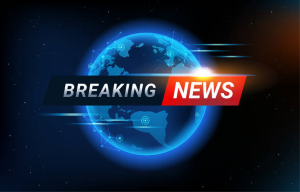
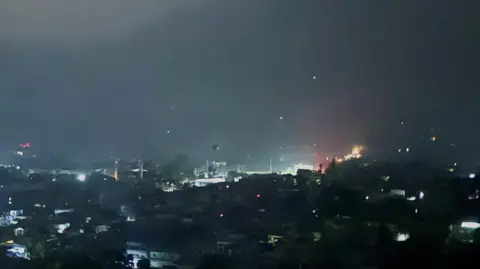
Two weeks after a deadly militant attack on tourists in Indian-administered Kashmir, India has launched a series of strikes on sites in Pakistan and Pakistan-administered Kashmir.
The Indian defence ministry said the strikes - named "Operation Sindoor" - were part of a "commitment" to hold those responsible for the 22 April attack which left 25 Indians and one Nepali national dead "accountable".
But Pakistan, which has denied any involvement in last month's attack, has described the strikes as "unprovoked", with Prime Minister Shehbaz Sharif saying the "heinous act of aggression will not go unpunished".
Pakistan's military says it has shot down five Indian aircraft and a drone. India has yet to respond to these claims.
Pakistani authorities say the strikes have killed eight civilians so far. India meanwhile says three civilians were killed by Pakistani shelling in Indian-administered Kashmir.
Where did India hit?
Delhi said in the early hours of Wednesday morning that nine different locations had been targeted in both Pakistan-administered Kashmir and Pakistan.
It said these sites were "terrorist infrastructure" - places where attacks were "planned and directed".
It emphasised that it had not hit any Pakistani military facilities, saying its "actions have been focused, measured and non-escalatory in nature".
According to Pakistan, three different areas were hit: Muzaffarabad and Kotli in Pakistan-administered Kashmir, and Bahawalpur in the Pakistani province of Punjab.
Pakistan's Defence Minister Khawaja Asif told GeoTV that the strikes hit civilian areas, adding that India's claim of "targeting terrorist camps" is false.
Why did India launch the attack?
The strikes come after weeks of rising tension between the nuclear-armed neighbours over the shootings in the picturesque resort town of Pahalgam.
The 22 April attack by a group of militants saw 26 people killed, with survivors saying the militants were singling out Hindu men.
It was the worst attack on civilians in the region in two decades, and sparked widespread anger in India.
Prime Minister Narendra Modi said the country would hunt the suspects "till the ends of the Earth" and that those who planned and carried it out "will be punished beyond their imagination".
However, India has not named any group it suspects carried out the attack in Pahalgam and it remains unclear who did it.
But Indian police have alleged two of the attackers were Pakistani nationals, with Delhi accusing Pakistan of supporting militants - a charge Islamabad denies. It says it has nothing to do with the 22 April attacks.
In the two weeks since, both sides had taken tit-for-tat measures against each other - including expelling diplomats, suspending visas and closing border crossings.
But many expected it would escalate to some sort of cross-border strike - as seen after the Pulwama attacks which left 40 Indian paramilitary personnel dead in 2019.
Why is Kashmir a flashpoint between India and Pakistan?
Kashmir is claimed in full by India and Pakistan, but administered only in part by each since they were partitioned following independence from Britain in 1947.
The countries have fought two wars over it.
But more recently, it has been attacks by militants which have brought the two countries to the brink. Indian-administered Kashmir has seen an armed insurgency against Indian rule since 1989, with militants targeting security forces and civilians alike.
This was the first major attack on civilians since India revoked Article 370 that gave Kashmir semi-autonomous status in 2019.
Following the decision, the region saw protests but also witnessed militancy wane and a huge increase in the number of tourists visiting the region.
In 2016, after 19 Indian soldiers were killed in Uri, India launched "surgical strikes" across the Line of Control – the de facto border between India and Pakistan - targeting militant bases.
In 2019, the Pulwama bombing, which left 40 Indian paramilitary personnel dead, prompted airstrikes deep into Balakot - the first such action inside Pakistan since 1971 - sparking retaliatory raids and an aerial dogfight.
Neither spiralled, but the wider world remains alert to the danger of what could happen if it did. Attempts have been made by various countries and diplomats around the world to stop the current situation escalating.
Already, UN chief Antonio Guterres has called for "maximum restraint", while US President Donald Trump said he hoped the fighting "ends very quickly".
Kashmir: Why India and Pakistan fight over it-
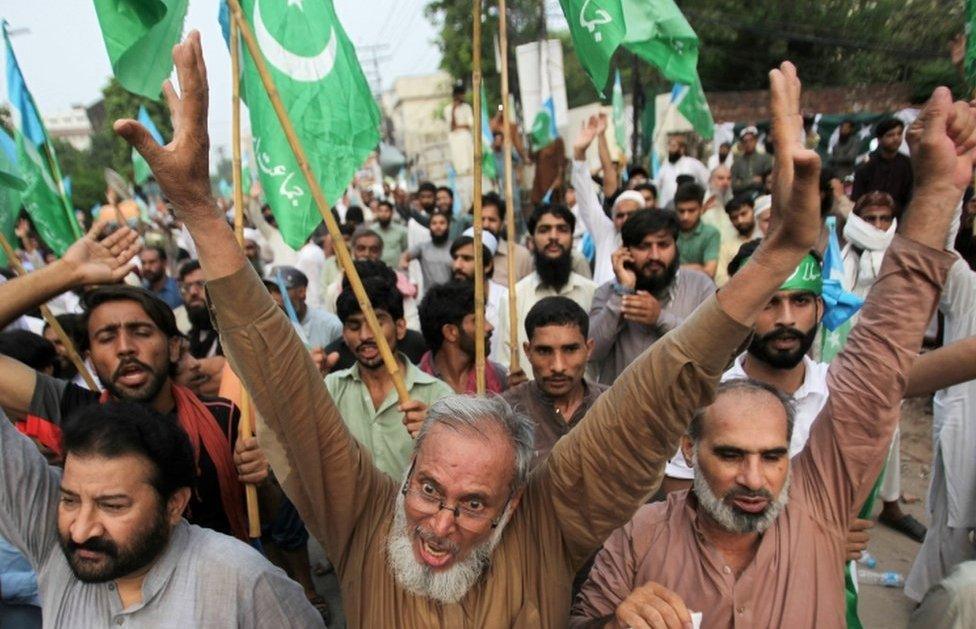
Nuclear-armed neighbours India and Pakistan have fought two wars and a limited conflict over Kashmir. But why do they dispute the territory - and how did it start?
How old is this fight?
Kashmir is an ethnically diverse Himalayan region, covering around 86,000 sq miles ( 222,738 sq km), and famed for the beauty of its lakes, meadows and snow-capped mountains.
Even before India and Pakistan won their independence from Britain in August 1947, the area was hotly contested.
Under the partition plan provided by the Indian Independence Act, Kashmir was free to accede to either India or Pakistan.
The maharaja (local ruler), Hari Singh, initially wanted Kashmir to become independent - but in October 1947 chose to join India, in return for its help against an invasion of tribesmen from Pakistan.
-
Kashmir profile - Timeline
A war erupted and India approached the United Nations asking it to intervene. The UN recommended holding a referendum to settle the question of whether the state should join India or Pakistan. However the two countries could not agree to a deal to demilitarise the region before the referendum could be held.
In July 1949, India and Pakistan signed an agreement to establish a ceasefire line as recommended by the UN and the region became divided.
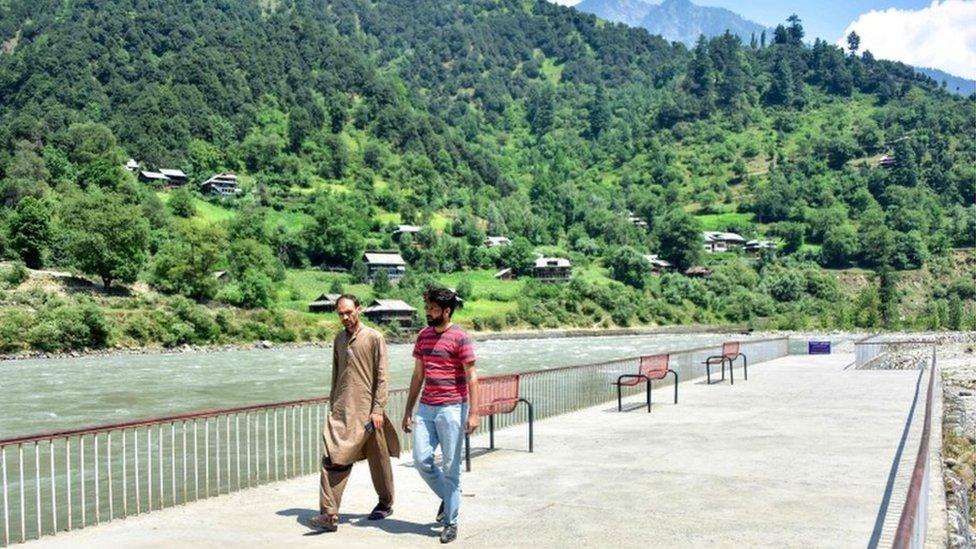
Kashmir is known by some as India's Switzerland, due to its verdant fields and sweeping mountainscapes
A second war followed in 1965. Then in 1999, India fought a brief but bitter conflict with Pakistani-backed forces.
By that time, both India and Pakistan had declared themselves to be nuclear powers.
Today, Delhi and Islamabad both claim Kashmir in full, but control only parts of it - territories recognised internationally as "Indian-administered Kashmir" and "Pakistan-administered Kashmir".
Why is Indian-administered Kashmir so unstable?
Within Kashmir, opinions about the territory's rightful allegiance are diverse and strongly held. Many do not want it to be governed by India, preferring either independence or union with Pakistan instead.
Religion is one factor: Jammu and Kashmir is more than 60% Muslim, making it the only state within India where Muslims are in the majority.
An armed revolt has been waged against Indian rule in the region for three decades, claiming tens of thousands of lives.
India blames Pakistan for stirring the unrest by backing separatist militants in Kashmir - a charge its neighbour denies.
A sudden change to Kashmir's status on the Indian side in 2019 exacerbated the situation.
Indian-administered Kashmir had held a special position within the country historically, thanks to Article 370 - a clause in the constitution which gave it significant autonomy, including its own constitution, a separate flag, and independence over all matters except foreign affairs, defence and communications.
On 5 August 2019, India revoked that arrangement - as the governing Hindu nationalist Bharatiya Janata Party (BJP) of Prime Minister Narendra Modi had promised in its election manifesto.
After months of tension following the Indian move - during which thousands were jailed or put under house arrest - violence in the region declined. Indian officials pointed to improved infrastructure, tourism, and investment as signs of greater stability.
But arrests continued, and critics argued that that calm had come at the cost of civil liberties and political freedoms.
How serious is the latest escalation?
The deaths of more than 40 Indian soldiers in a suicide attack on 14 February 2019 - the deadliest targeting Indian soldiers in Kashmir since the insurgency began three decades ago - led to a major flare-up.
India launched air strikes in Pakistani territory - the first such action since 1971 - sparking retaliatory raids and an aerial dogfight.
The 2019 events ended any hope of a thaw in the immediate future.
However, relative calm followed until 27 April 2025, when militants attacked tourists in Indian-administered Kashmir, killing 26 civilians.
Delhi moved quickly with retaliatory measures - closing the main border crossing, suspending a key water-sharing treaty, expelling diplomats, and halting most visas for Pakistani nationals - who were given days to leave.
Delhi also barred all Pakistani aircraft - commercial and military - from its airspace, mirroring Islamabad's earlier move.
Pakistan retaliated with its own visa suspensions and suspended a 1972 peace treaty with India.
Troops on both sides exchanged intermittent small-arms fire across the border.
Then on 7 May 2025, India hit a number of sites in Pakistan and Pakistan-administered Kashmir.
The threshold for escalation has shifted dramatically since 2019. Cross-border and aerial strikes by India have become the new norm, provoking retaliation from Pakistan. This has further intensified an already volatile situation.
Kashmir remains one of the most militarised zones in the world.
The US and the international community have been calling on both India and Pakistan to de-escalate tensions, but it is unclear whether these calls will be heeded.
Weren't there high hopes for peace in the new century?
India and Pakistan did indeed agree a ceasefire in 2003 after years of bloodshed along the de facto border (also known as the Line of Control).
Pakistan later promised to stop funding insurgents in the territory, while India offered them an amnesty if they renounced militancy.
In 2014, Modi came to power promising a tough line on Pakistan, but also showed interest in holding peace talks.
Nawaz Sharif, then prime minister of Pakistan, attended Modi's swearing-in ceremony in Delhi.
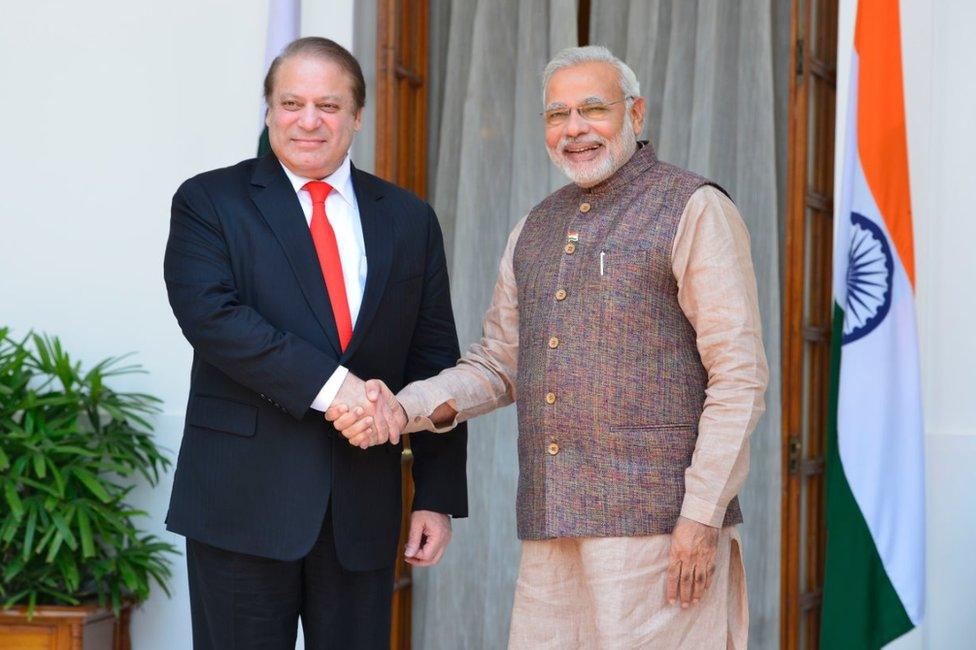
Pakistan and India's prime ministers promised peace in 2014
But the apparent thaw did not turn to peace.
- Questions and Answers
- Opinion
- Motivational and Inspiring Story
- Technology
- Live and Let live
- Focus
- Geopolitics
- Military-Arms/Equipment
- Segurança
- Economy
- Beasts of Nations
- Machine Tools-The “Mother Industry”
- Art
- Causes
- Crafts
- Dance
- Drinks
- Film/Movie
- Fitness
- Food
- Jogos
- Gardening
- Health
- Início
- Literature
- Music
- Networking
- Outro
- Party
- Religion
- Shopping
- Sports
- Theater
- Health and Wellness
- News
- Culture

